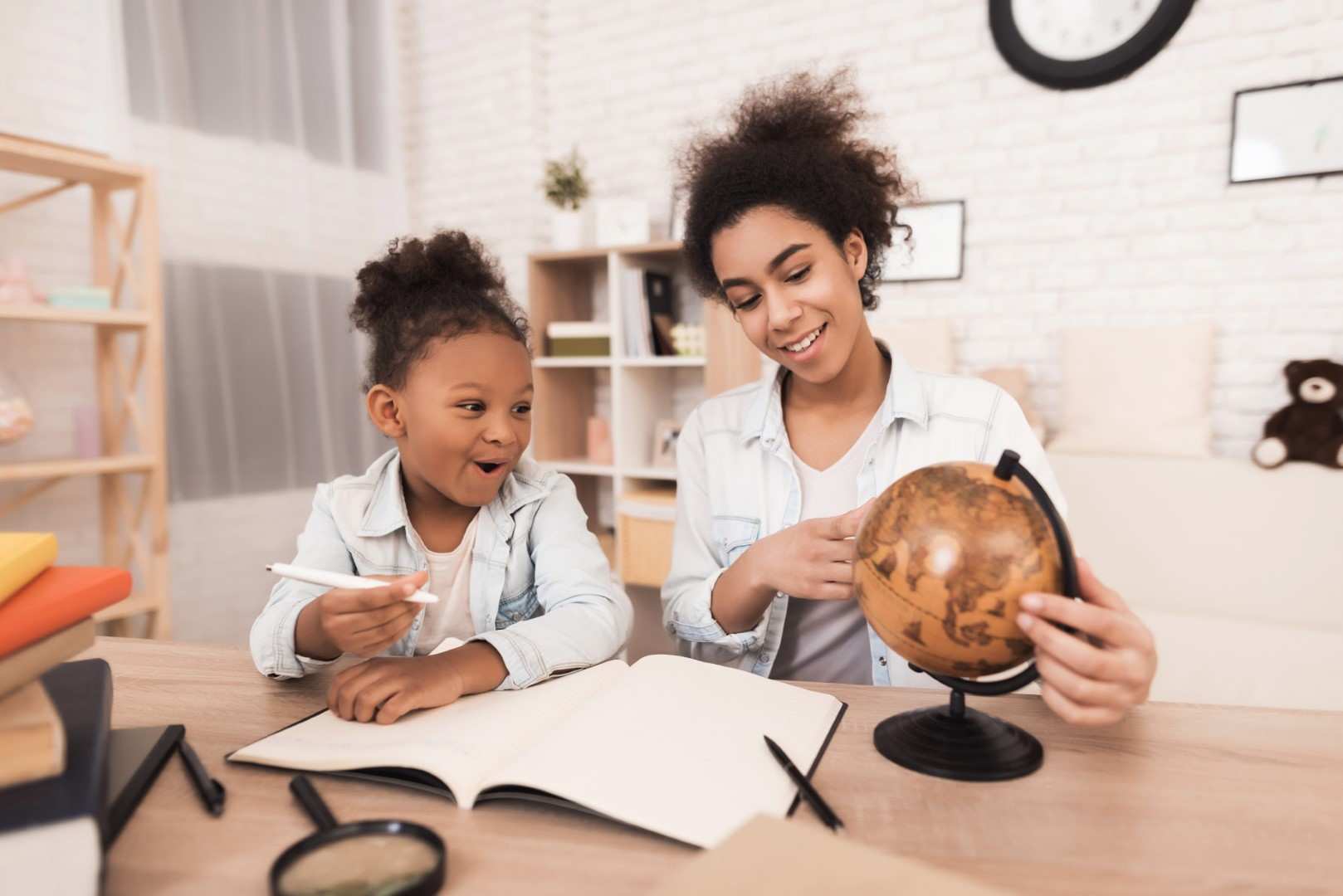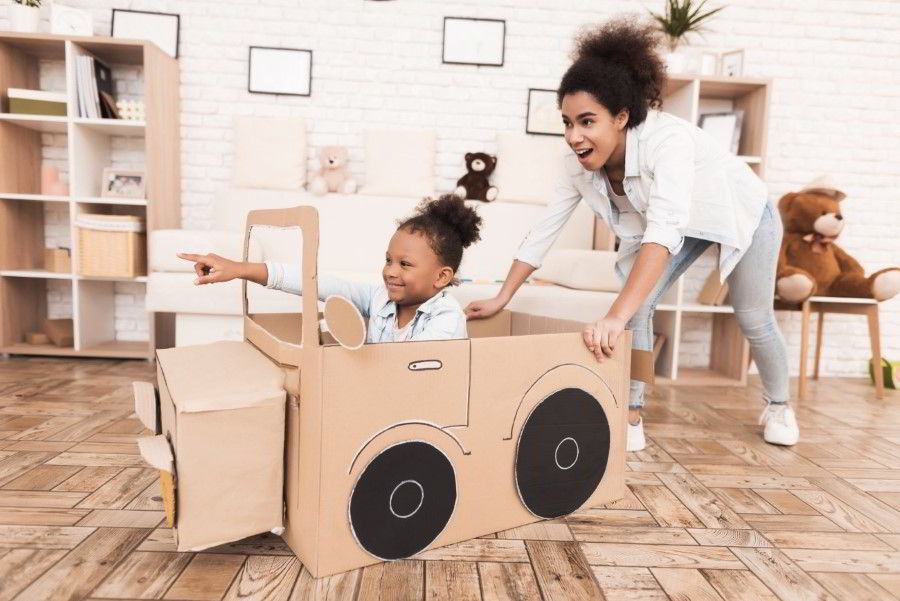Table of Contents
Homeschooling Kindergarten. 6 Popular Questions Parents Ask Homeschooling Kindergarten

How to Get Started Homeschooling Kindergarten
- When Should We Begin Homeschooling Kindergarten?
- What Should We Consider When Laying the Groundwork for Homeschooling Kindergarten?
- What Does a Typical Day Look Like When Homeschooling Kindergarten?
- Important Considerations When Setting a Routine for Homeschooling Kindergarten
- How Can I Help My Kindergarten-Age Child Adapt to a Homeschool Routine?
- Can I Work from Home and Homeschool Kindergarten?
- What Are Some Must Have Supplies for Homeschool Kindergarten?
When Should We Begin Homeschooling Kindergarten?
When to start homeschooling your kindergarten-age child depends on several factors. Young children are full of enthusiasm and wonder; homeschooling kindergarten should foster their curiosity and creativity.
Don't forget, that homeschooling happens throughout the day. You are homeschooling when your child helps you measure ingredients for a recipe, when you snuggle up together to read a book, as you pull weeds in the yard and marvel at their long roots.
However, there is a time when you want to start some more formal instruction in a few subject areas, like math. So, at what age does homeschool kindergarten begin?
Here are several facts to determine when to begin homeschooling kindergarten:
- State homeschooling laws. Become familiar with your state's requirements for registering your homeschool, recordkeeping, accountability, and any curriculum requirements.
- The maturity level of your child. Does your child have the attention span or physical maturity to begin some 15 to 20 minute more formal schooling sessions?
- Signs of readiness Does your child want to "do school" and show signs of starting their homeschool kindergarten work? If they are asking and enthusiastic, then go ahead and start. But make it a relaxed and creative environment where your child will want to learn and super-engage with an activity. Let's foster a lifelong love of learning in our children!
- Learning differences. If you know or suspect some learning differences, like sensory processing, autism, dyscalculia, dyslexia, you will want to gather information and develop a kindergarten homeschool plan that incorporates what your child will need in terms of the physical learning environment, scheduling, and types of material, and when to start with formal kindergarten work.
In our homeschool, we had to incorporate 10-12-minute work sessions followed by 5 minutes of movement to avoid sensory and frustration overload. In later years, we had a dyscalculia diagnosis and had to incorporate more visual strategies for math.
When you are aware of these types of learning differences at the onset of kindergarten, you can make important homeschool decisions.

What Should We Consider When Laying the Groundwork for Homeschooling Kindergarten?
As mentioned above, read and understand your state's homeschool laws. Even if you are a veteran homeschool family, refresh yourself on the requirements.
Next, before you begin to research homeschool kindergarten resources, take time to access the needs of your child starting kindergarten, your homeschool, and your family.
Here are questions to ask as you lay the groundwork to start homeschooling kindergarten:
- What is my child's learning style? Is your child an auditory, visual, or kinesthetic (hands-on) learner? They could be a mix of two or more of these styles.
If your child is a visual, auditory, or hands-on learner, an online program like CTCMath is a resource to test drive. The lessons are an ideal length when homeschooling kindergarten and are easily be completed in15 minutes.
CTCMath provides an option to print a PDF of the lesson right from the lesson screen, which is perfect for reviewing with your kindergartener later in the day or before starting the next day's lesson. - Does my child have learning differences? As discussed above, consider the physical, emotional, and learning differences your child has.
- What are your child's strengths? Your child may excel at phonics and be working at a first-grade level. Perhaps your child loves to build and make things or picks up quickly on auditory cues. What types of activities fire up your child's creativity?
- What causes frustration for your child? Things to consider here are your child's small motor and large motor development? If they struggle with fine motor skills, asking them to hold a pencil and do seatwork for 20 minutes may be frustrating. Consider activities that help develop those motor skills but don't frustrate (building with Legos, using kitchen tongs to pick up objects, etc.)
- What is your child's waking routine in the morning? If you have a child who is an early riser and has their best hour early in the day, then consider starting their more formal work then. If they do best late morning, then schedule a few 15-120 minute sessions then.
- What other grade levels will you be teaching in your homeschool? If you are homeschooling your other children, can you combine subjects and bring your kindergarten child into the same teaching time. Perhaps your kindergarten and first grade student can work together in the same online math program, like CTCMath. For one low price, you can access multiple levels of CTCMath for your homeschool. You can easily add kindergarten homeschool math into your existing homeschool schedule.
- Do you have younger children, and what are their routines? When homeschooling kindergarten, short 15-20 minute sessions are typical, so if you have a younger child, naptimes can be used to have a quiet phonics or math lesson.
- What is your budget? Last but not least important is your budget and getting the most for the money you spend on homeschool curriculum.
Look for resources like CTCMath that grant access to all grade levels for one affordable price. For one student, the rate is $14.97 a month or $98.50 yearly. For more than one student, the rate is $19.97 or $148.50 yearly. If your child finishes the kindergarten grade level during that year, you can move them on to the next grade! View a demo here.
What Does a Typical Day Look Like When Homeschooling Kindergarten?
Homeschool routines and schedules vary for every homeschooling family. It may take you a few weeks or a few months to find your sweet spot each school year.
Yes, every school year. As your children get older, they learn to work more independently, and they may start a side business or get a job or attend more co-op classes. Your homeschool schedule will change from year to year.
However, there are factors to consider when setting a routine, especially when starting to homeschool kindergarten with one of your children.

Important Considerations When Setting a Routine for Homeschooling Kindergarten
- Are there any legal subject requirements in your state for kindergarten? If there are no specific subject requirements, you have some flexibility.
You will want to cover the core subjects when homeschooling kindergarten – math, phonics/reading, and writing. Nature study, art, music, and dance are afternoon free-time activities or morning basket activities the family can do together. - What days do you want to homeschool? If your state requires a certain number of instruction hours per school year and does not dictate days per week, then you have the flexibility to set your school week. Be flexible and creative so the schedule fits your family best.
- Will you be utilizing online learning resources that do the planning and grading for you? Such resources free up time for other activities like nature journaling, baking together, and doing an art project. A homeschool kindergarten math program, like CTCMath, handles all planning, testing, and grading for you. You and your child can enjoy completing the lessons together, and you can have immediate insight into math areas that need additional focus and areas that your child comprehends well.
- How much time do you need to review the day's activities and prepare for the next day? Schedule time to examine how the day went and what's coming up in the next two days. This can be a five-minute quick recap or a longer review time.
- How long does it take for your child to get started in the morning? When do they typically wake up?
- Again, what other ages are you homeschooling? Can your kindergarten-age child join in with older siblings? When my youngest was in kindergarten, her science consisted of doing experiments alongside her ninth-grade brother. While she had her core subjects of math, phonics/reading, and writing, she loved doing "big kid" school too.
- Can you combine subjects? Morning baskets bring all ages together to do a read-aloud, study an artist, listen to different types of music, read poetry, etc. All of these are topics in which a kindergartener can participate.
There are many creative and enjoyable ways to develop a routine for homeschooling kindergarten that is pleasant and stress-free. Remember to re-evaluate how things are going and be flexible enough to pivot as needs change.
How Can I Help My Kindergarten-Age Child Adapt to a Homeschool Routine?
There are some simple strategies to help your child transition smoothly into a homeschool kindergarten routine.
- It's important that the schedule created supports a do-able day that does not add stress.
- Provide your child with a visual of your kindergarten schedule. Have your schedule on a chalkboard or marker board.
- Use visual cues on the schedule. Use math symbols to indicate when it's time to work on math and building blocks or art supplies to show free play time or the cover of a favorite book to let your child know it's reading time.
- Use a checklist so your child can mark what was accomplished.
- Start with short periods of formal work time. Try 15 to 20-minute increments. You may need to scale back the work sessions and then add a minute every week until you're up to about 15 or 20-minute time increments.
- If there are focus issues, don't forget to look at the learning environment. Move to a different room in the house, move from a hard chair to the couch, and on warm days try homeschooling outside. Is there enough light? Is it too noisy? Homeschool kindergarten is a new daily routine for your child, and there will be adjustments.
Most importantly, smile Mom/Dad. Begin and end each schooling time with a positive comment and a hug. If frustration starts to set in when working on a task, step back, and stop it for the day or a few days. That is the importance of routine check-ins to evaluate what is working and what needs adjusting.

Can I Work from Home and Homeschool Kindergarten?
Yes, you can work and homeschool kindergarten! We have an in-depth article here on our blog written by a homeschool mom who homeschooled and worked full time for over 20 years.
Here are a few strategies:
- Take advantage of getting up earlier and getting in an hour or two of work.
- Have a shelf of activities that are specifically for work time.
- Use sensory bins. Here is an excellent article on sensory bins.
- Utilize online learning resources like CTCMath, where planning, tracking, and grading are done for you while providing your child with a professional and fun math curriculum.
- Hire a mother's helper or swap child care time with a friend or relative.
- Tag-teach with your spouse.
Read our full article on working full time and homeschooling at this link.
What Are Some Must Have Supplies for Homeschool Kindergarten?
Here are a few must-haves we had in our homeschool cabinets and on bookshelves:
- Books, books, books. I collected them from book swaps, yard sales, used book stores, and hand-me-downs from family. Include non-fiction, fiction, and poetry. Don't forget field guides with real photos (as opposed to drawings.)
- Recyclables for making robots. You can tie this into a school lesson by having your kindergartener dictate a story about their robot.
- An empty aquarium with a lid for those times when taking a few minutes to study a creature found out in the yard.
- Play cash registers with play money. This was one of the most-used items on our homeschool "toy" shelf.
- Art supplies, including the $1 kits from the dollar store.
- A roll of plain white paper. If you are able, keep a table set up covered in this paper with crayons nearby.
- Marble run. This is one of the few toys we have saved and enjoyed during the holidays. Everyone loves trying to build the ultimate marble run. For younger children, it's a fun way to see physics in action.
- Puzzles. Big floor puzzles are a creative way to teach about the solar system, animals, geography, and much more
- Pegboard and pegs, geoboards
- Wand magnet set with magnetized marbles and "chips.
- Last but not least, an assortment of building toys. This includes Legos™, wooden blocks, K'Nex™, etc.
Additional Homeschool Kindergarten Resources
- Math is a core subject to plan for as you begin homeschooling kindergarten. Read what other parents have to say about CTCMath.
- A morning basket is a way to start off the homeschool day and incorporate some additional topics into your homeschool kindergarten plan. Read more about morning baskets here.
As you begin homeschooling kindergarten, you will discover new things about your child, how they best learn, what gets them excited about learning, and what sparks their creativity.
Keep the schedule doable, flexible, and address core subjects like math, reading, and writing. Use resources that fit your child's learning style, present a 15-minute lesson, and fit your budget. Check out the engaging and age-appropriate kindergarten math curriculum at CTCMath.
Enjoy this time, get to know your child, and remember this is the beginning of your child's lifelong journey of learning.
Michelle Moody is a veteran homeschool mom who worked full time and homeschooled for over 20 years. She has taught in the classroom both in the United States and on the mission field. She holds a master's degree in Early Childhood Development and Education. Michelle has authored over 40 homeschool science curriculum kits and is the owner of Thehomeschoolscientist.com